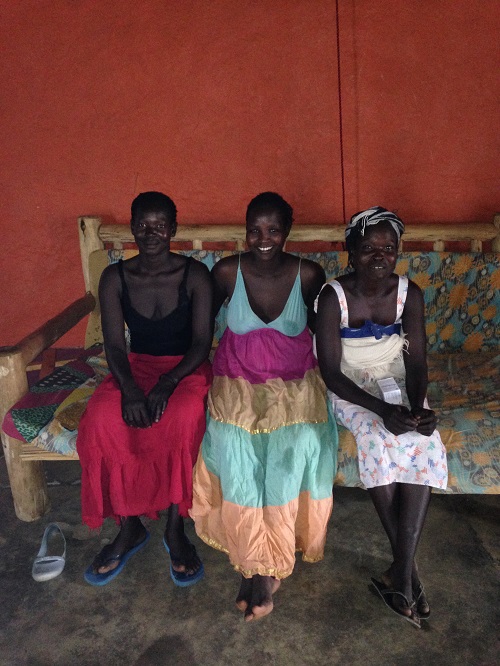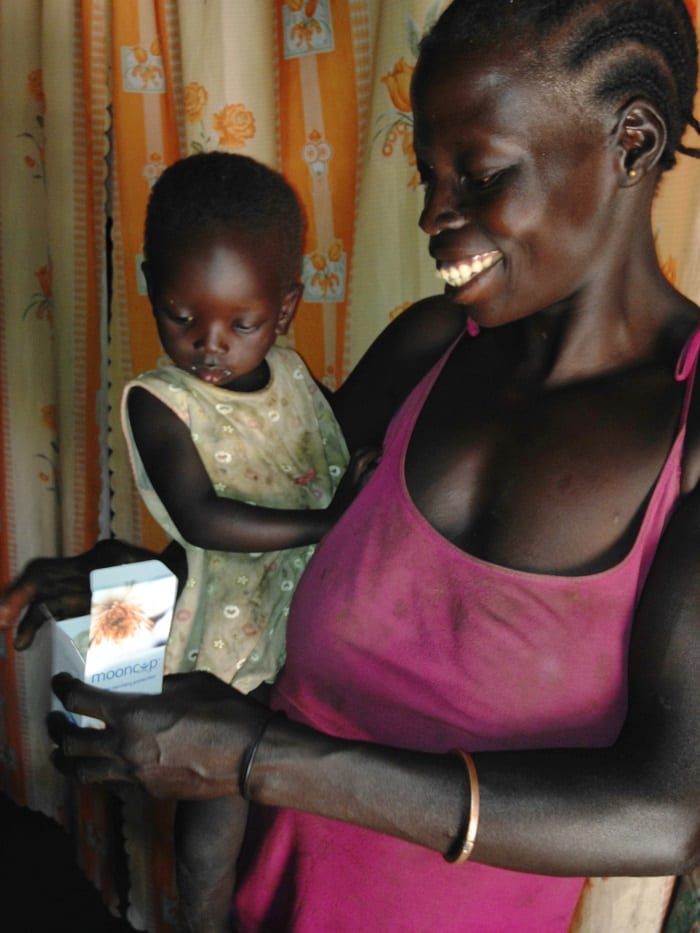Changing lives in rural Uganda with Mobilise a Midwife
Mooncup menstrual cups in rural Uganda, Africa
Written by Emily Hill of Mobilise a Midwife
Menstruation is still a huge stigma in many communities around the world. Northern Uganda is not immune from these attitudes. It is well documented that girls and women in East Africa face problems with poor sanitation, lack of resources and lack of education about menstruation and sanitary products. School attendance has been seen to be notably reduced once a girl reaches menstruating age.
How we introduced Mooncup menstrual cups in Uganda
The ambition of our project, called ‘Mobilise a Midwife’, was to change the lives of women in a rural area of Uganda by introducing Mooncup menstrual cups.
With menstruation being such a burden for so many women, there was an opportunity for this to change for the women in Atiak, a rural area of Northern Uganda.
In this area of rural Northern Uganda, menstrual products often do not reach those who need them. Girls and women commonly use torn pieces of cloth to catch their menstrual flow. As menstruation is such a subject of cultural taboo in East Africa, there can be a feeling of hesitancy on initiating discussions about the sanitary products that women were commonly using.
Here, in the town of Atiak, Mother Health International founded ‘Ot Nywal Me Kec Birth House’ (The House of Birth and Peace). This Birth House serves as a community hub, supporting traditional midwives in providing free maternity and infant care for the local community. It became an ideal way to introduce the Mooncup menstrual cup to people…

Viola who works as a cook at the centre (in the centre) translated and explained to traditional midwife joska (right) about the Mooncup
My experience in Atiak, Uganda
When I arrived as a volunteer Midwife in Uganda I soon realised there was no need to feel concerned about initiating the conversation. When women working at the Birth House learnt that Mooncups were in my rucksack, people came knocking on my hut door – the existence of menstrual cups was already known by some at the Birth House, and many were curious. It felt like a huge step had been taken to get this project off the ground thanks to previous volunteer midwives openly discussing their use of a menstrual cup.
The wise women of the community
Traditional Midwives are often the wise women of the community. They and the women working at the birth house, including translators and cooks, seemed the ideal women to be the first recipients of the menstrual cups. By starting our introduction of the Mooncup with these pillars of the community, it meant that as the project progressed they were able to educate others. These women, who had some awareness of the female anatomy, were also able to access support from the readily available volunteers at the Birth House.
At the Birth House education occurs mainly through story telling, so those that already were using the cups were able to teach others about the importance of cleaning the vessel, as well as insertion techniques and I’m sure lots of other information which was not translated as there is often a lot of laughter during these teaching circles!

Traditional midwife Lilly and daughter Olivia
The results
The changes that this single vessel brings to a woman means that she can leave her home to fetch water, to sell produce at the market, to go to school or to support another woman through birth, all during her own menstruation. Previously women and girls stayed at home for the first days of their monthly flow because of fear of visible leakage, stigma, and the shame of feeling unclean.
These days have changed for the women who received a Mooncup. They say they feel free and are able to continue their work, which is mainly subsistence farming. In the coming months women accessing the birth house will be able to receive a Mooncup. These women may be attending the birth house for postnatal care or sexual health services or just because they have heard that Mooncups have arrived. It’s a new era.
Written by Emily Hill, Photos by Emily Hill
References:
Jewitt, S. & Ryley, H. (2014) It’s a girl thing: Menstruation, school attendance, spatial mobility and wider gender inequalities in Kenya. Geoforum, 56, 137-147.
You can find out more about Mobilise a Midwife on their scoial media channels:
Instagram @mobiliseamidwife
Mobilise a Midwife Twitter
Mobilise a Midwife Facebook Page
Mother Health International
Read more on the Mooncup Blog
Mooncup präsentiert: Periode ohne Drama
Kaufe nur einen echten Mooncup®!





